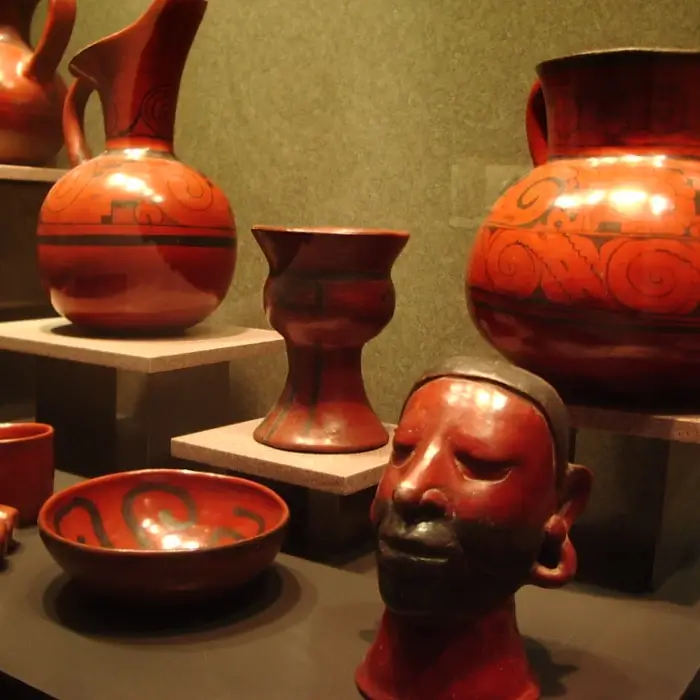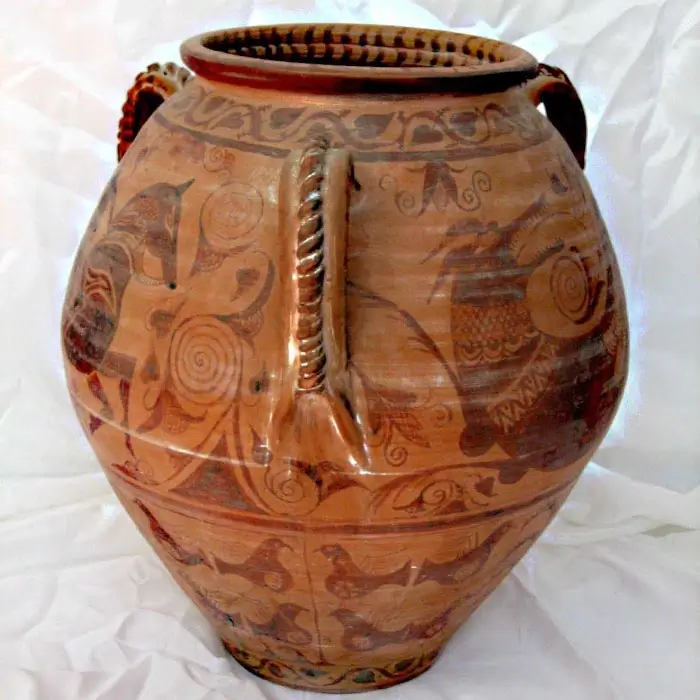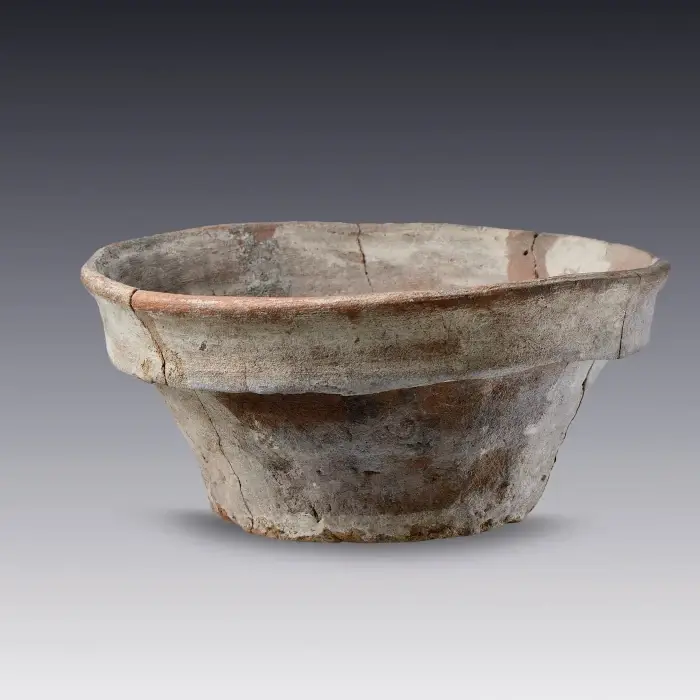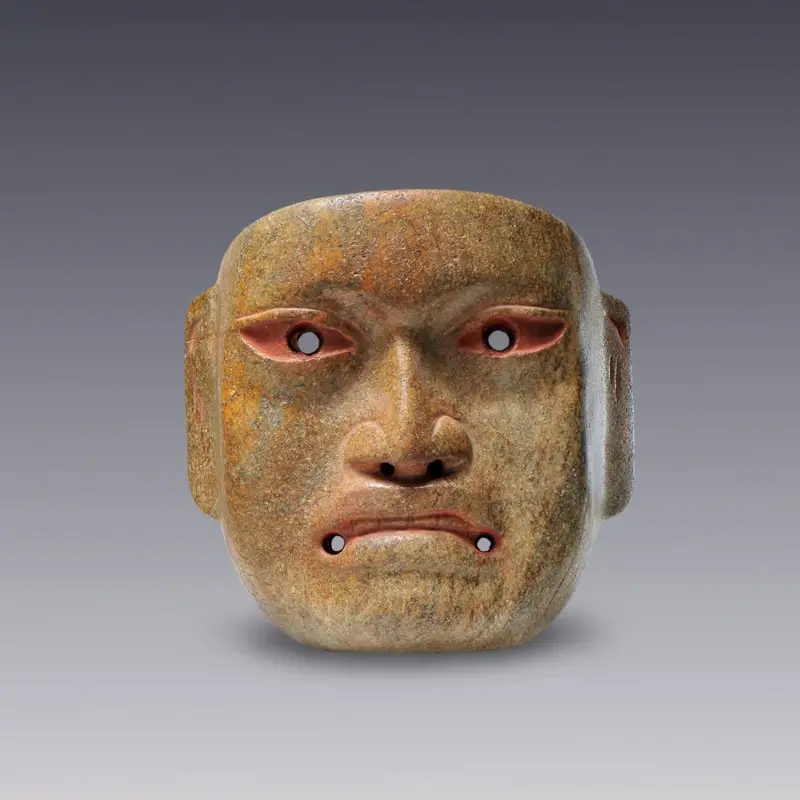Tiahuanaco Ceramics: Legacy of the Andean Highlands
Tiahuanaco pottery is renowned for its artistic complexity and profound symbolism, reflecting the rich worldview of the Tiwanaku culture, which flourished in the central Andes near Lake Titicaca.
These pre-Columbian archaeological pieces stand out for their meticulous decoration, which includes geometric and zoomorphic iconography, revealing both the technical skill and spiritual depth of their potters.
In this article I will tell you how this millenary civilization was able to express its inner world and its understanding of the cosmos by transforming clay into an art that fortunately has been able to reach us.

Origin of Tiahuanaco ceramics
The Tiahuanaco culture flourished in the Andean highlands, specifically in the region that today comprises western Bolivia, southern Peru, northern Chile and northwestern Argentina.
This civilization had its center in the city of Tiwanaku, near Lake Titicaca, and emerged as one of the most significant and influential in the Andes before the expansion of the Inca Empire.
Its peak period is between 500 and 1000 A.D., this is where Tiahuanaco pottery reached its maximum production although some remains indicate that its first pieces could date back to 1500 B.C.
How was Tiahuanacota pottery made?
Although specific details about the exact techniques of ceramic manufacture at Tiahuanaco are not widely documented, aspects of its production can be inferred from general knowledge about Andean ceramics and archaeological finds at the site.
After the extraction and preparation of local clay, they used techniques such as manual modeling and the use of molds, as well as coil-building, a technique that involves the construction of ceramic objects by superimposing rolls of clay.
Decoration techniques would include engraving, relief carving and painting with natural pigments before firing in kilns or open fires, which allowed the clay to harden and fix the designs.
The use of engobes (surface layers of liquid clay that can be colored) and post-fired painting were also common practices that added detail and color to their works.
Characteristics of Tiahuanaco ceramics
Tiahuanaco pottery not only served utilitarian functions such as food or beverage containers and ritual objects, but also had a deep symbolic and ritual significance.
The figures depicted on their pieces, such as the well-known “Kero” (ceremonial vessel present in many types of pre-Columbian ceramics), were not mere decorations; they embodied religious and cosmological concepts, narrating creation myths, deities and cultural heroes. This symbolic dimension, which we will soon explore in greater detail, is key to understanding the Tiahuanaco cosmogony and way of life.
They also decorated with images of fish and birds, as evidenced by the remains discovered in the temple of Kalasasaya. These objects could have had ritual and social meanings, possibly used in funerary offerings for the nobility.
Cultural influence of the Tiahuanacotas
The Tihuanacotas Tiwanakotas, as the people of this culture are known, exerted a considerable influence on contemporary and later cultures within the Andean region.
The complex iconography developed by the Tiahuanaco can be observed in the works of the Wari, Inca and other pre-Columbian civilizations, evidencing a cultural exchange or an expansion of their territorial and cultural domain.
Today, these pieces are highly valued not only for their aesthetic beauty but also for what they reveal about the religious, social and political practices of this ancient civilization.
Archaeological findings of Tiahuanacota ceramics
Archaeological finds in places such as Tiwanaku, the capital of this culture, and surrounding areas have provided a wealth of information on Tiahuanaco pottery.
Excavations have brought to light countless artifacts ranging from everyday objects to intricately crafted ritual offerings.
The Tiwanaku site is notable for its complex structures, such as the Akapana Pyramid, the Semisubterranean Temple, and the famous Sun Gate. These constructions demonstrate the Tiwanaku people’s skill in working with stone and managing space for ceremonial and social purposes. In addition, the layout and orientation of these monuments reflect a profound astronomical knowledge and possibly a ceremonial calendar based on solar cycles.
These discoveries have allowed researchers not only to accurately date the evolution of this culture but also to understand the complex manufacturing and decorative techniques employed by Tiahuanaco artisans.
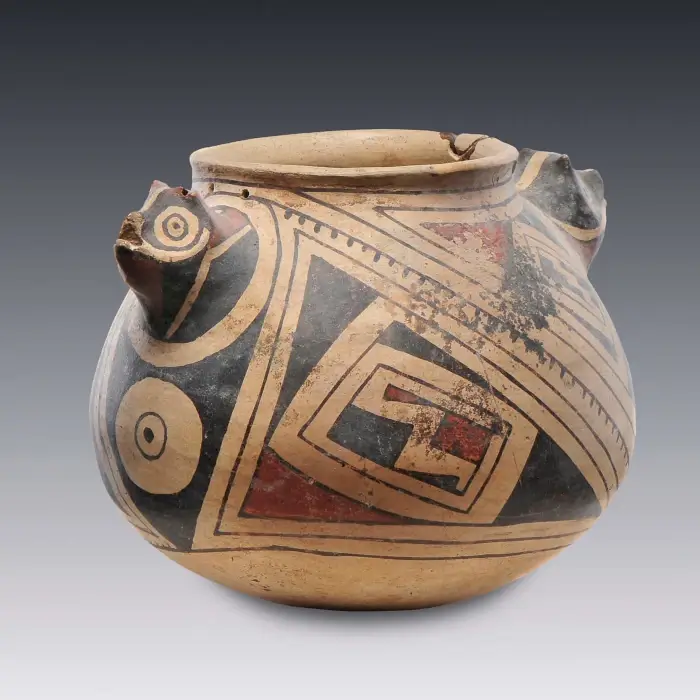
Buy pre-Columbian ceramics
Find original pieces and also reproductions identical to the traditional ceramic works that were made in pre-Columbian America and that are only found in museums, making them affordable.
The conservation of Tiahuanacota ceramics
The preservation of Tiahuanaco ceramics presents significant challenges. Exposure to environmental factors, looting of archaeological sites and lack of resources for adequate research compromise the integrity of these valuable artifacts.
In spite of this, national and international efforts seek to mitigate these risks, employing modern technologies for the conservation and detailed analysis of the pieces, with the objective of discovering even more secrets of the Tiahuanaco ceramics.

